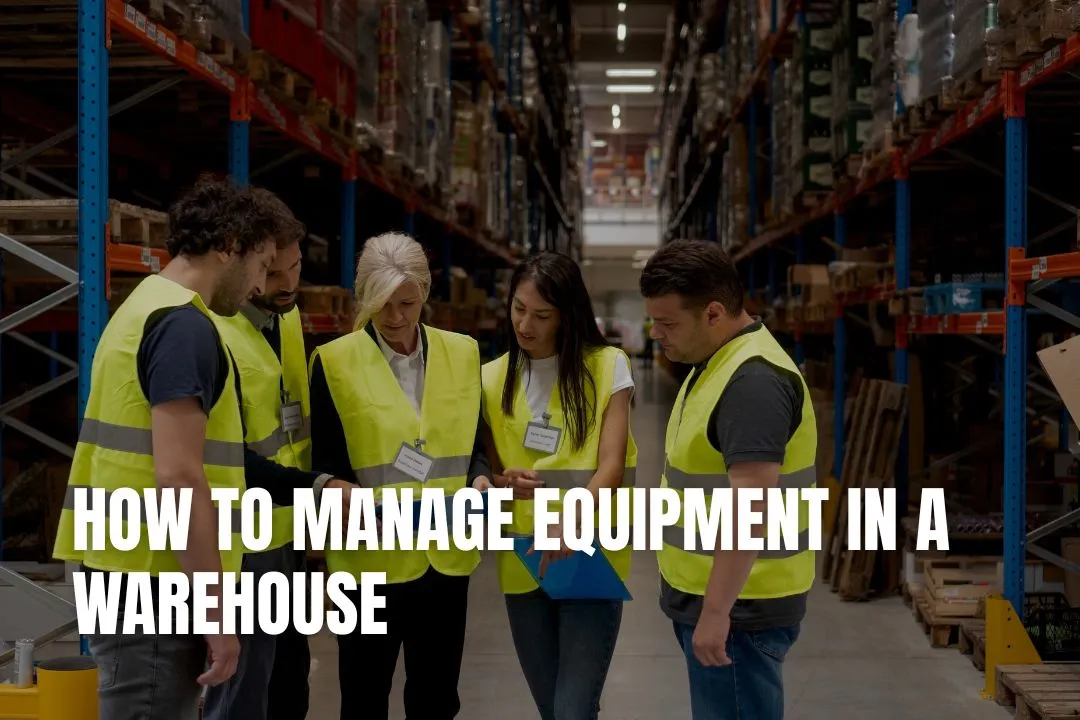
Managing a warehouse can be challenging. With numerous types of equipment and storage options available, it's essential to find what best suits your needs. Whether you're building a new setup or improving an existing one, knowing which tools to choose can make a big difference. A more efficient storage system can help operations run smoothly and boost employee morale and productivity.
Choosing the right equipment is crucial for effective warehouse management. The right tools streamline workflows, ensure safety, and make the most of your space. Effective storage solutions create an organised space, making packing, shipping, and inventory management easier.
Let's examine how to equip and store items in your warehouse for improved functionality.
Choosing the right racking system can change your warehouse space. There are several types, each designed for different storage needs. Selective racking provides direct access to stored items, making it suitable for diverse inventory management needs. If you have limited space, pallet flow racks enable products to be stored on a first-in, first-out basis, making restocking easier.
Adjustable shelving is helpful for businesses with changing inventory levels. This flexibility allows you to customise storage to fit your current needs, ensuring you utilise every inch of space wisely. These solutions also improve organisation and make it easier to access goods.
Forklifts are essential for moving products safely and efficiently. They come in electric, gas, and manual models, allowing you to select one that suits your operations and budget. Electric forklifts are eco-friendly and agile, making them ideal for use in tight spaces. Gas-powered forklifts are better suited for outdoor use, where greater power and lifting capacity are required.
Pallet jacks are another helpful option. They are suitable for moving goods over short distances and are a cost-effective choice. Whether handling pallets in bulk or navigating narrow aisles, having the proper material handling equipment improves your warehouse operations.
Dock lifts are vital for warehouse logistics. These platforms connect your loading dock to a truck, making loading and unloading easier and more efficient. They can be raised and lowered to fit different heights, allowing workers to move goods easily, which reduces strain and speeds up the process.
Dock lifts also help transport heavy items safely. This increases efficiency and improves workplace safety. When heavy items require minimal manual handling, the risk of injury decreases. Adding dock lifts to your warehouse can significantly improve the loading and unloading process.
Storage containers are flexible tools for various warehousing needs. They can store bulk items or help organise smaller ones, fitting into any setup. Metal containers are strong and protect items from the weather. Plastic containers are lighter and often more affordable, making them ideal for general storage.
Using clear plastic bins helps warehouse staff quickly see what's inside without having to dig through containers. This organisation saves time, especially in busy environments where efficiency is key. Consider implementing a colour-coded system for your containers, categorising them by different inventory types. This can make it even easier to find products quickly.
Investing in a robust inventory management system can significantly improve warehouse operations. These systems give you real-time information about stock levels, so you know what you have, what you need to order, and what's being shipped out. Automating this process reduces human error and helps maintain stock at optimal levels, saving you time and money.
Many modern systems can also be accessed on mobile devices, allowing staff to manage inventory from anywhere in the warehouse. This mobility enhances accountability and enables you to track products throughout their journey.
A warehouse must have strong safety measures. Providing the right safety equipment, such as helmets, gloves, and reflective vests, protects employees as they work. Installing safety barriers around busy areas can help prevent accidents.
Training staff in safety rules is also crucial. Regular safety drills and workshops reinforce best practices, ensuring safety remains a top priority. Building a culture focused on safety not only protects employees but also creates a sense of trust throughout the warehouse.
To create an efficient warehouse environment, pay attention to the right tools and storage solutions. With the proper equipment and strategies, your warehouse can run smoothly, setting the stage for success. Remember, a well-equipped warehouse is key to effective logistics.
Your first step should be to analyse your inventory. Consider the size, weight, and turnover rate of your products. This will help you decide between options like selective racking for diverse items or pallet flow racks for first-in, first-out stock management.
Not necessarily. Electric forklifts are ideal for indoor use as they are eco-friendly and agile in tight spaces. However, gas-powered forklifts offer more power and are better suited for outdoor tasks and heavier lifting requirements.
Installing dock lifts is a significant safety improvement. They create a stable, level platform between the dock and the truck, reducing the physical strain on workers and minimising the risk of accidents when moving heavy items.
Yes, absolutely. An inventory management system provides real-time data on stock levels, which helps prevent overstocking or stockouts. By automating tracking, you reduce costly human errors and improve efficiency, making it a valuable tool for any size of operation. For tailored advice, business coaches like Robin Waite often highlight how such systems provide a strong foundation for growth.
Using clear plastic bins is a great start, as they allow for quick visual identification of contents. You can also implement a colour-coding system, assigning different colours to specific product categories. This simple organisational strategy can drastically reduce the time your staff spends searching for items.